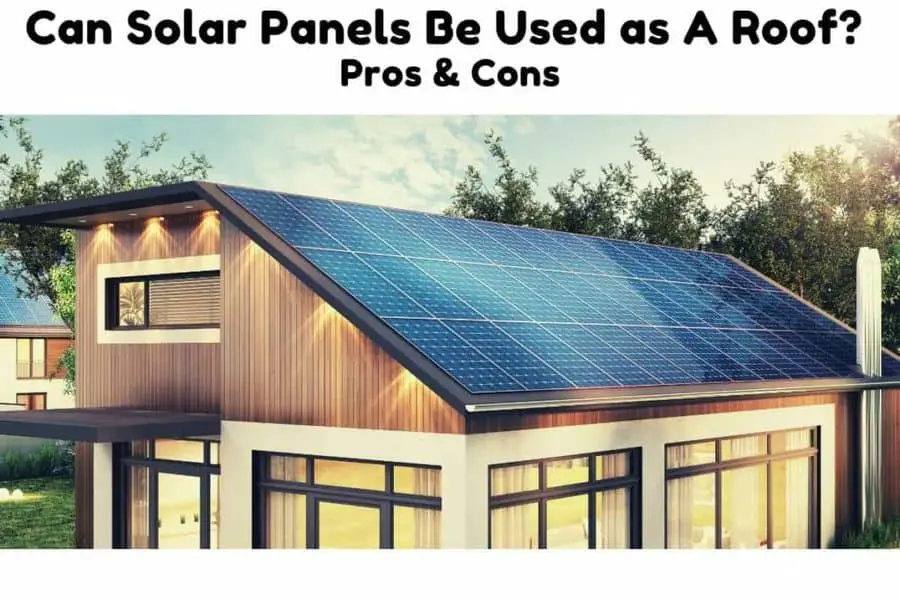Solar has a long history that stretches as far back as the 7th century BC. Its first use was by the Romans who used it to light fires using magnifying glasses. Another early use of solar was for warmth. Ancient Romans built homes that had “sunrooms” that would concentrate sunlight in the home.
Solar technology has expanded to encompass more complex uses since those early centuries when it was just used for heating. Today, solar is primarily used to generate electricity that powers everything from calculators to entire factories. This is arguably a more efficient use compared to lighting fires or sunbathing.
Solar panel technology has grown in leaps and bounds, especially in the last 20 years. Thanks to the large-scale investment, research, and increasingly widespread adoption, solar has seen phenomenal growth in recent years.
Can You Use Solar Panels Instead of Roof Tiles?
Solar panels can be used in place of traditional roof tiles. Instead of having solar panels installed on top of a roof, the roof tile can be replaced with a solar roof instead. One of the more recent innovations in solar is solar roofs. Having burst onto the market a few years ago, solar roofs are “taking off” so to speak.
On a side note! If you’re in need of a reliable and high-performance portable solar panel, We strongly recommend the Jackery SolarSaga 100W Portable Solar Panel (Amazon Link).
With a high conversion efficiency and foldable design, this solar panel is easy to transport and set up, making it perfect for outdoor activities like camping, hiking, and RV trips.

The US solar cell technology used in this panel ensures that you get the most efficient and reliable solar charging possible.
There is also a 60W option that is more affordable (Amazon Link)
In this article we look closely at what solar roofs are and whether they will replace conventional solar panels.
Also check out our post on “If Solar Panels Can Power an Entire House?“

What Is a Solar Roof?
Typically, when people think of solar panels, they have a picture of a square shiny glass attached to a roof. Those are your conventional roofs with solar panels on top. Solar roofs are an innovation that does away with the need to have both a roof and solar panels.
Why have two when you can have two-in-one?
Rather than having solar panels installed as a separate fixture on the roof, the roof itself is a solar panel. The roof is made out of shingles or tiles with mini-solar panels integrated into them. That is why they are also called solar shingles.
Building-integrated photovoltaics (BIPV)
Solar shingles are part of a broader category of new solar technology known as building-integrated photovoltaics or BIPV. BIPVs as the name suggests, incorporate solar directly into a building. This is typically done by replacing a component of the building such as the roof, windows, skylights, facades, or even balcony railings. (Source)
Solar shingles represent one way of replacing both conventional roof tiles and solar panels in one swoop. Solar shingles have been around for more than six years. The most popular solar roof is perhaps the Tesla solar shingles.
Today they are not the only producers of solar roof shingles. There are several other manufacturers on the market including CertainTeed, SunTegra, and Luma just to name a few.
What’s the Difference Between Solar Panels and Solar Roof Tiles?
They both use solar cells to absorb sunlight and convert it into electricity. In that sense, they are both solar panels. The difference is that solar shingles act as both a roof and solar panel whereas traditional solar panels are mounted on the roof. (Source)
For more on this, check out our post Can Solar Panels Fall or Be Blown Off a Roof?
Are Solar Roofs Strong?
One of the biggest questions about solar roofs is whether you can step on them. If you are going to replace a conventional roof with a solar roof, it’s natural that you would wonder if they can provide as much protection.
Solar roof shingles are designed to handle the same weight and pressure a normal roof goes through. You can walk on it if say you need to do repairs on it.
Why Don’t We Put Solar Panels on Every Roof? (The 2 Major Reasons!)
Given the concern about global warming and climate change, one would expect there to be a stronger push for placing solar panels on every roof. The case for solar is even stronger if you take into account the cost savings of having solar panels. Building solar power plants is in some cases, up to $10 per MWh cheaper than continuing to run existing coal power plants.
Despite the drop in solar panel prices and the benefits represented by solar, there has not been as hard a drive to increase solar capacity as would be expected. This is for several reasons.
The cost of solar is expensive
The first and biggest is of course the cost of going solar. Even though prices of solar panels have fallen by 70% since 2010, it is still prohibitively expensive to install solar. Although this is heavily dependent on factors like the size of your home and available financing, the price of an average-sized home installation is between 15-$20,000.
While the panels themselves are cheap, it’s other soft costs like permits and installation that drive the costs up.
Resistance to solar
Cost is not the only obstacle in the way of greater solar panel adoption. Part of what makes solar economically viable is the money homeowners can earn through selling their excess electricity to the grid.
For more on solar panels and money, check out our post ” Can You Make Money with Solar Panels Installed on Your House? Is It Worth It!“
Many utilities have resisted this by imposing fees and insurances on homeowners to make this less attractive. For utilities increased solar means fewer consumers from whom they get their revenue.
Are Solar Panel Roofs Worth It?
Solar roofs are a better investment compared to solar panels on a standard roof in some cases. They can potentially bring the cost of going solar down.
There are certain cases where it makes better sense to get a solar roof. The clearest case is for a new building construction where the building owner intends to install solar as well. Here it would be cheaper to install a solar roof than to install both a roof and solar panels. Solar roofs have a few other pros and cons compared to conventional solar panels on roofs.
Pros of solar roofs
- They look better than stand-alone solar panels bolted onto a roof. Solar shingles integrate seamlessly into the design of a building.
- No need to worry about space to put solar panels since the entire roof is a solar panel.
- With a lifespan of 25-30 years, they last as long as a roof made from traditional materials.
Cons of solar roofs
- Solar roofs are more expensive. Generally, they cost around $5,000 per kilowatt. A residential solar panel system is cheaper, costing about $3,000 per kilowatt. They’re even cheaper for large commercial and industrial projects at $1000 per kilowatt.
- They take longer to install. (Source)
